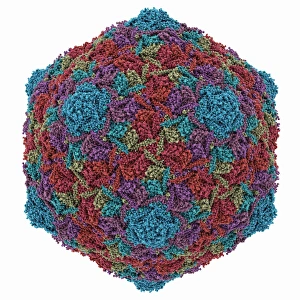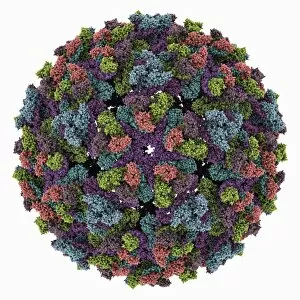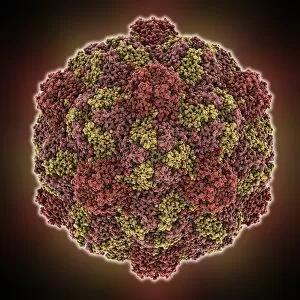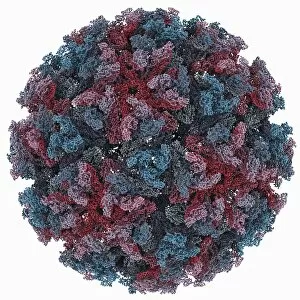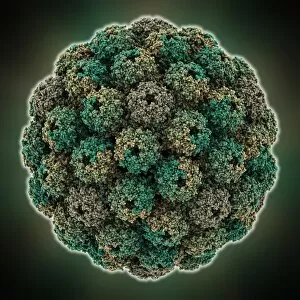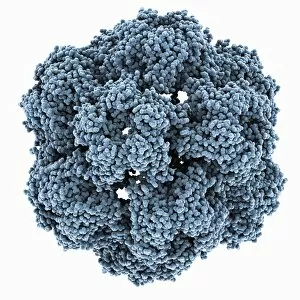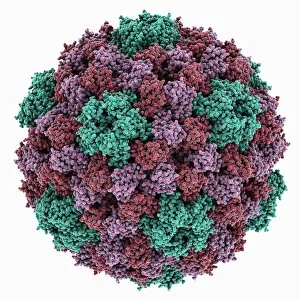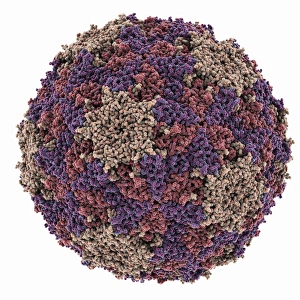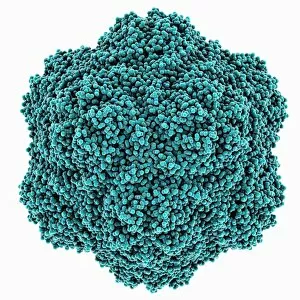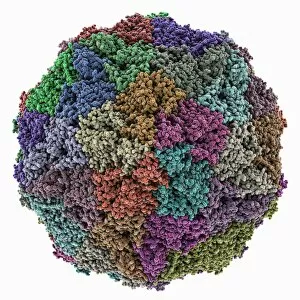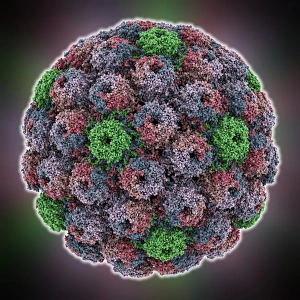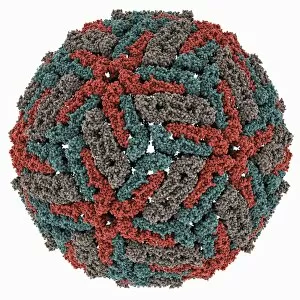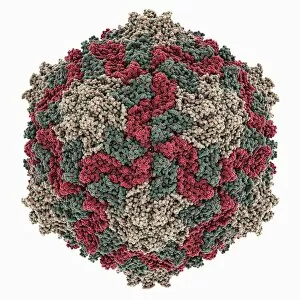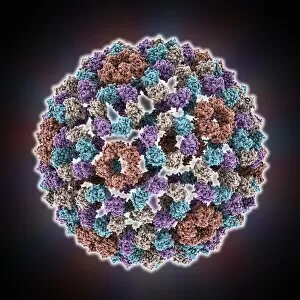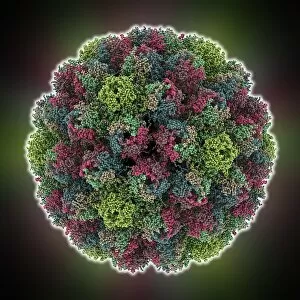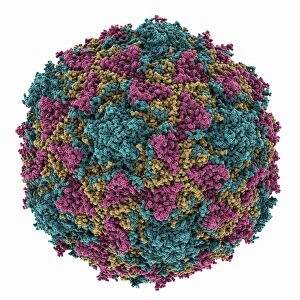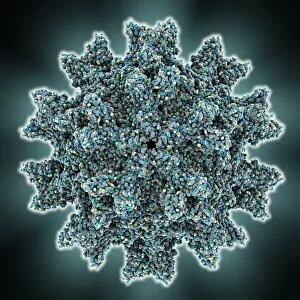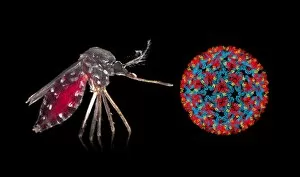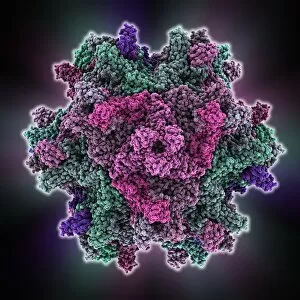Spherical Symmetry Collection
"Spherical Symmetry: Unveiling the Beauty of Nature's Capsids" In the microscopic world, a captivating phenomenon known as spherical symmetry unfolds
All Professionally Made to Order for Quick Shipping
"Spherical Symmetry: Unveiling the Beauty of Nature's Capsids" In the microscopic world, a captivating phenomenon known as spherical symmetry unfolds. From the HK97 bacteriophage capsid to the Chikungunya virus capsid, nature showcases its artistic prowess through these molecular masterpieces. The HK97 bacteriophage procapsid stands tall with its intricate geometric patterns, resembling an architectural marvel. Meanwhile, the Turnip yellow mosaic virus capsid mesmerizes with its delicate lattice-like structure that encases genetic material like a precious treasure. As we delve deeper into this symmetrical realm, our gaze is captured by the Hepatitis B virus capsid's molecular model. Its elegant arrangement evokes awe and admiration for nature's precision in creating such complexity on a minuscule scale. The Infectious bursal disease virus capsid reveals itself as a harmonious fusion of shapes and curves. Its seamless design reflects both strength and resilience against external forces. Moving forward, we encounter the Sindbis virus capsid's molecular model—a testament to nature's ability to balance beauty and functionality effortlessly. Its symmetrical composition ensures stability while allowing for efficient viral replication. Returning to familiar territory, we revisit the HK97 bacteriophage procapsid—this time appreciating its robustness in protecting vital genetic information from harm. It serves as a reminder that even simplicity can be breathtaking when viewed through an enlightened lens. The Murine polyomavirus capsid unveils yet another facet of spherical symmetry—an amalgamation of elegance and intricacy that captivates scientists worldwide. This masterpiece showcases how form follows function in perfect harmony within nature’s creations. Stepping further into this captivating universe, we encounter the Brome mosaic virus capsid—a true work of art crafted by evolution over millennia. Its symmetrical architecture not only safeguards but also facilitates viral propagation across plant hosts seamlessly. Our journey takes us next to witness Semliki forest virus capsid's enchanting beauty.

